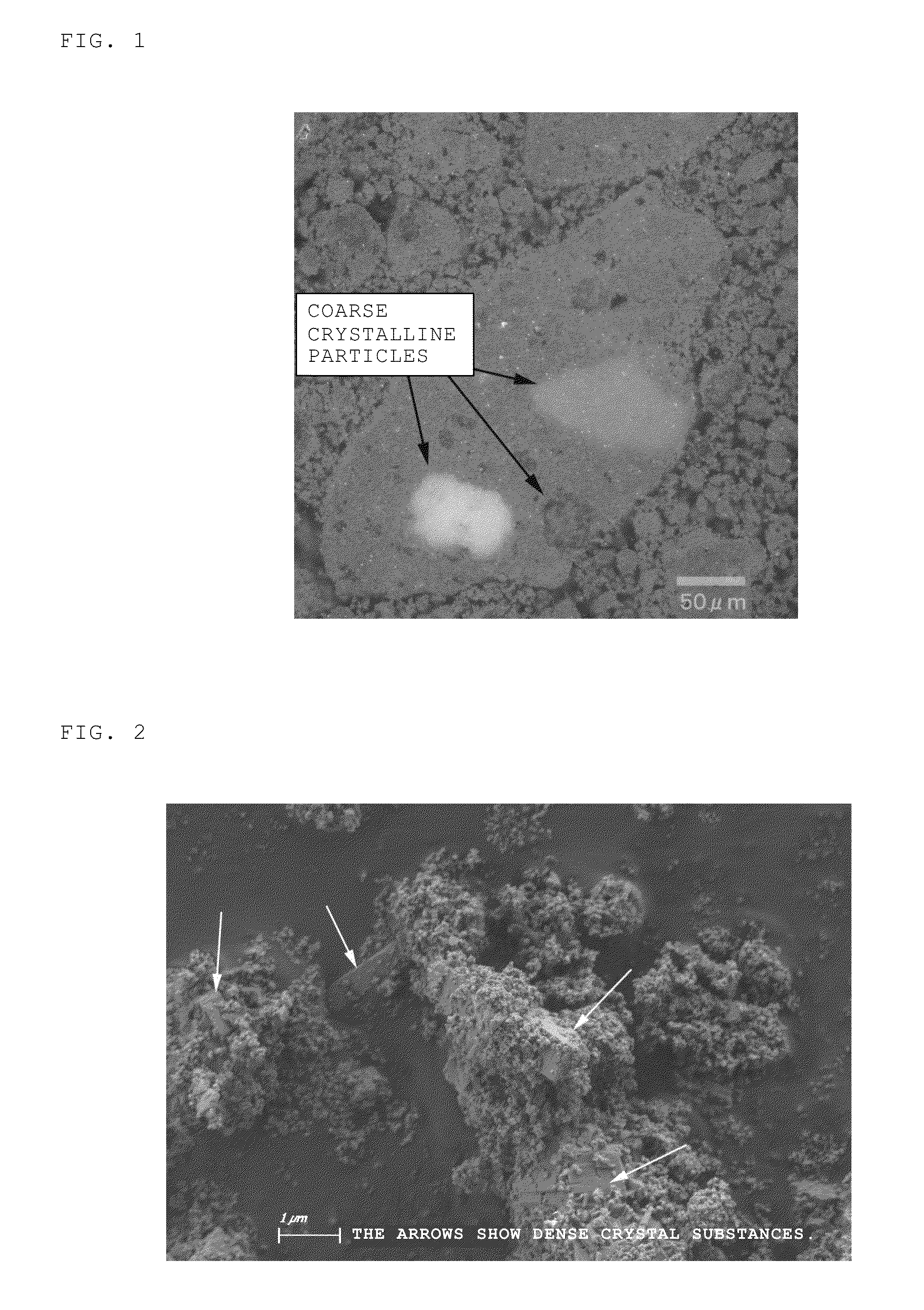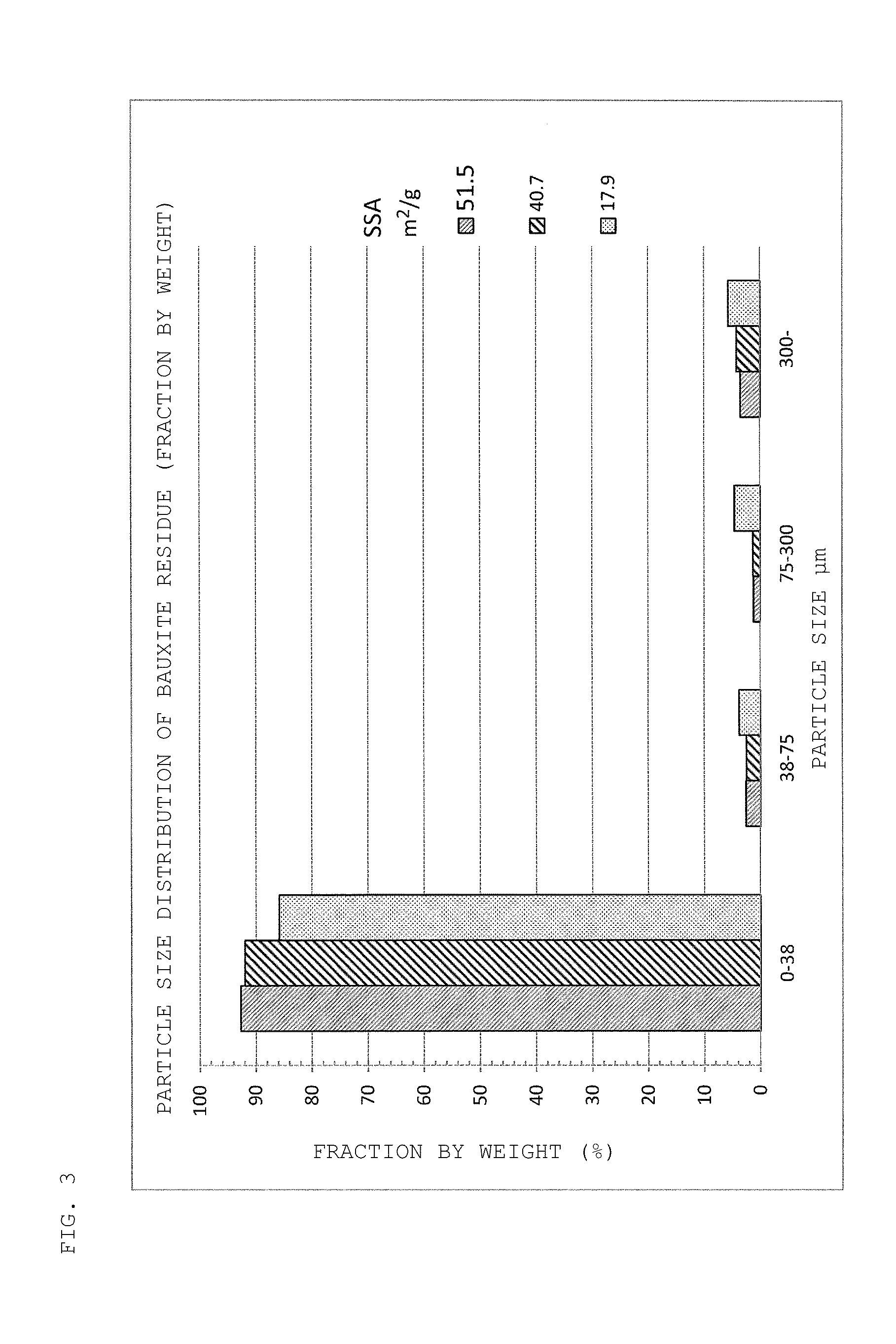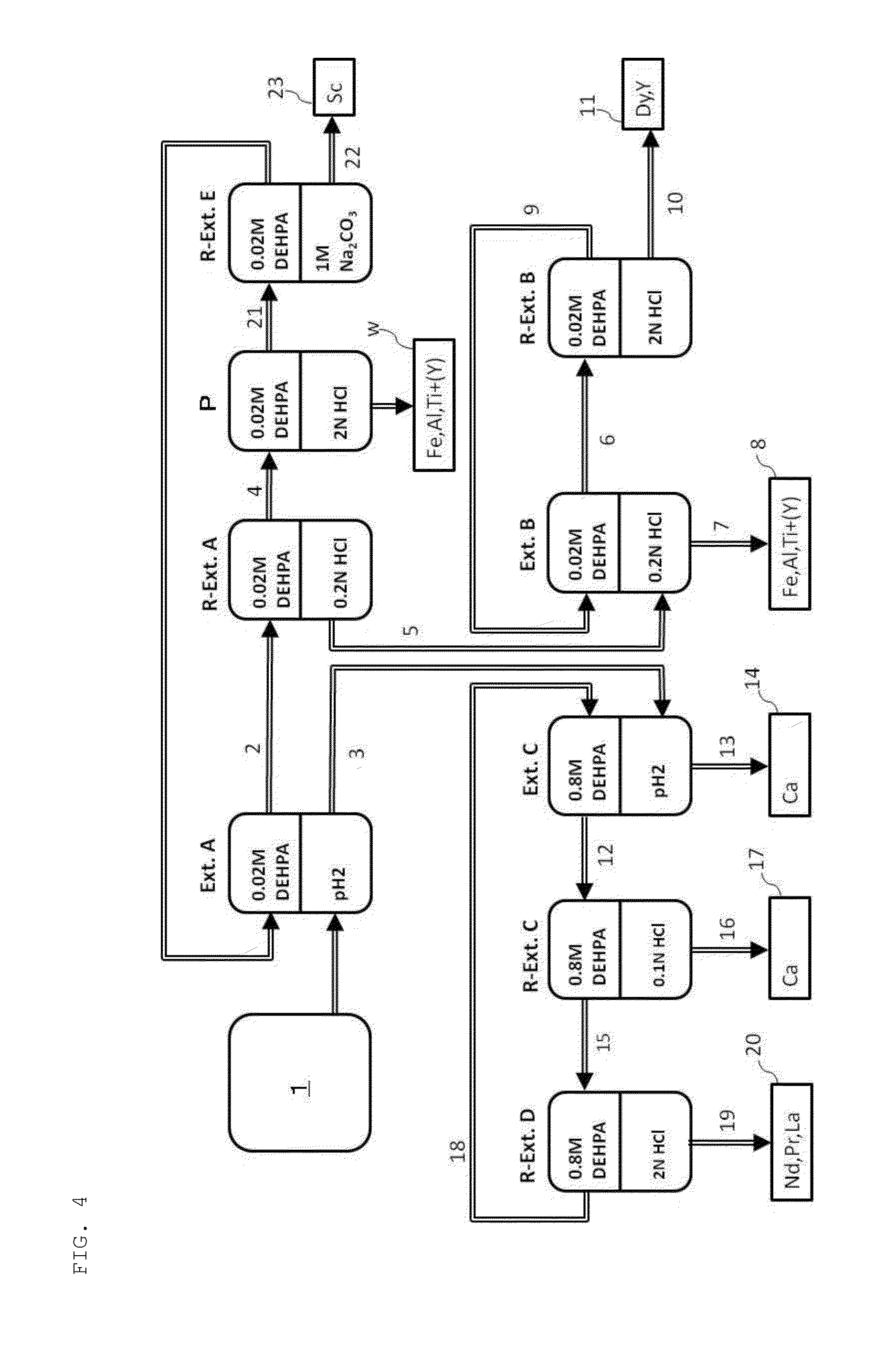Method of recovering rare-earth elements
a rare earth element and recovery method technology, applied in the field of rare earth element recovery methods, can solve problems such as increased costs, and achieve the effects of improving the efficiency of leaching treatment, reducing profitability, and facilitating separation and recovery
- Summary
- Abstract
- Description
- Claims
- Application Information
AI Technical Summary
Benefits of technology
Problems solved by technology
Method used
Image
Examples
example 18
[0092]A leachate was recovered in the same manner as in Examples 1 to 17 and Comparative Examples 2 to 6 described above except that leaching treatment for recovering rare-earth elements was performed by using the raw material bauxite residue of each sample number listed in Table 6 and using a liquid leaching agent listed in Table 6 under conditions listed in Table 5 including the liquid-solid ratio (L / S) in slurry, the pH of the slurry (initial stage), the treatment temperature (° C.), and the holding time (minute(s)). The recovered leachate was used to measure the content of each of the elements Sc, Y, and Nd and Dy, which belong to lanthanoids, and Al, Fe, Ca, Si, and Ti, which are impurities, and the leaching ratio of each element was calculated.
[0093]Table 6 shows the results.
example 19
[0094]Leaching treatment was performed in the same method as in Example 18. After the leaching treatment, a leachate was recovered after being neutralized with a bauxite residue. The leachate was used to measure the content of each of the elements Sc, Y, and Nd and Dy, which belong to lanthanoids, and Al, Fe, Ca, Si, and Ti, which are impurities, and the leaching ratio of each element was calculated.
[0095]Table 6 shows the results.
TABLE 6ExampleExample1819Raw material bauxiteSample No.55residueSpecific39.339.3surface area(m2 / g)Amount used0.1000.100(kg)LeachingKind of acidH2SO4H2SO4treatmentLiquid-solid ratio5.55.5LeachingTemperature3030conditions(° C.)pH1.011.00Time3030(minute(s))Amount of bauxite residue for0.00.081neutralization (kg)NeutralizationTemperature—30treatment(° C.)pH—4.25Time—30(minute(s))Amount of leachate (mL)550550Leaching concentrationSc2.42.6(ppm)Y3851Nd3650Dy5.78.3Ca640650Al1,650320Si1,120120Ti245Fe8629
[0096]It is found from Table 6 that, in Example 19, in which n...
example 20
[0097]The leachate yielded in Example 3 and having the composition shown in Table 7 was used to perform, by a solvent extraction method, the removal of impurity elements and the concentration of rare-earth elements. In the solvent extraction method, first, the pH of the leachate was initially adjusted to 3.0, the resultant precipitate was removed, and the pH was adjusted to 1.5. After that, there was used an extractant prepared by diluting DEHPA with kerosene to a concentration of 0.8 M, and the leachate and the extractant were brought into contact with each other at a liquid ratio of 1:1 under stirring for 3 minutes. Then, the mixture was subjected to liquid-liquid separation into an extracted organic phase and an aqueous phase after completion of extraction (aqueous phase after extraction).
TABLE 7SampleH2SO4 extractpH2.0ComponentSc1.2(ppm)Y44.2La66.7Pr10.8Nd41.4Dy5.6Ca751Al3,044Si1,312Ti16Fe123
[0098]A 6 N aqueous solution of hydrochloric acid was used as a back extractant, and the...
PUM
| Property | Measurement | Unit |
|---|---|---|
| Temperature | aaaaa | aaaaa |
| Temperature | aaaaa | aaaaa |
| Temperature | aaaaa | aaaaa |
Abstract
Description
Claims
Application Information
 Login to View More
Login to View More - R&D
- Intellectual Property
- Life Sciences
- Materials
- Tech Scout
- Unparalleled Data Quality
- Higher Quality Content
- 60% Fewer Hallucinations
Browse by: Latest US Patents, China's latest patents, Technical Efficacy Thesaurus, Application Domain, Technology Topic, Popular Technical Reports.
© 2025 PatSnap. All rights reserved.Legal|Privacy policy|Modern Slavery Act Transparency Statement|Sitemap|About US| Contact US: help@patsnap.com



